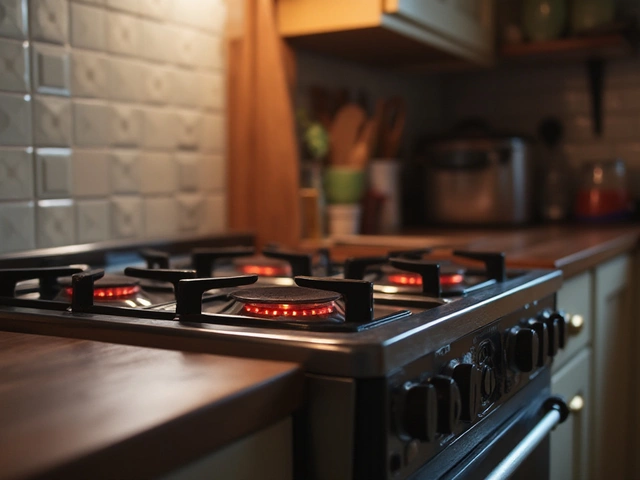How to Identify a Malfunctioning Electric Stove Element
December 5 2024Broken Oven Element: What to Look For and How to Fix It
Ever opened your oven and found it staying cold? Most of the time it’s the heating element that’s gone bad. The element is the metal coil that glows red and cooks your food. When it quits, you get an oven that won’t heat, and dinner plans go sideways.
Here’s how to know the element is the culprit, what you can do yourself, and when it’s smarter to call a professional.
Quick Signs Your Oven Element Is Broken
1. No heat at all – The oven stays at room temperature even after 20 minutes of pre‑heat.
2. Uneven heat – Some spots are hot, others stay cool. You’ll notice food cooking unevenly.
3. Visible damage – Look inside the oven cavity. If the coil is blackened, cracked, or broken, it needs replacing.
4. Burnt smell – A faint, burnt odor when you turn the oven on can mean the element is short‑circuiting.
DIY Checks Before You Call for Help
First, make sure the oven is unplugged or the breaker is off – safety first. Then, locate the element (usually at the bottom or back of the oven). Use a multimeter set to “ohms” and touch the probes to the element terminals. A reading of 0 Ω or infinite resistance means the element is toast.
If the multimeter shows a normal resistance (usually between 20‑40 Ω), the element may be fine and the problem could be the thermostat or wiring. In that case, it’s best to let a qualified gas engineer investigate.
When the element is indeed faulty, you can replace it yourself if you’re comfortable with basic DIY. Most ovens use a simple screw‑on element. Grab the right replacement part – check the make, model, and voltage (220‑240 V in the UK) – then follow these steps:
- Unscrew the old element and pull it out gently.
- Connect the new element’s wires to the terminals (note which wire goes where).
- Secure the new element with the screws.
- Turn the power back on and run a quick heat test.
All of this usually takes under an hour, and the part itself costs between £30‑£70. If you’re not sure about the wiring, skip the DIY and call a pro.
When to Call Bedford Gas Appliance Repair Services
Even though the element is an electrical part, a gas‑engineered service can spot hidden problems that could affect safety. Call us if you notice any of these red flags:
- Repeated element failures – there might be a wiring issue.
- Gas smell or odd noises when you try to heat the oven.
- You’re uncomfortable working with electricity or the oven is still under warranty.
- You need a quick, guaranteed fix and don’t want to risk a botched DIY job.
Our certified engineers can replace the element in about 30‑45 minutes, run a full safety check, and make sure everything is up to code. Plus, we offer a warranty on parts and labour, so you won’t have to worry about the same issue popping up again.
Bottom line: a broken oven element is a common, fixable problem. Spot the signs, do a quick multimeter test, and decide if you’re up for a simple swap. If anything feels off, or you just want peace of mind, give Bedford Gas Appliance Repair Services a call. We’ll get your oven back to baking, roasting, and broiling in no time.
 18 Jul
18 Jul
How to Tell If Your Oven Element Is Broken: Signs, Symptoms, and Fixes
Wondering if your oven element is broken? Learn the clear signs, causes, and easy tests to spot and fix a faulty oven element. Get your oven back in action.
Read More...



